7. Das Cabinet des Dr. Caligari (Robert Wiene, 1920)
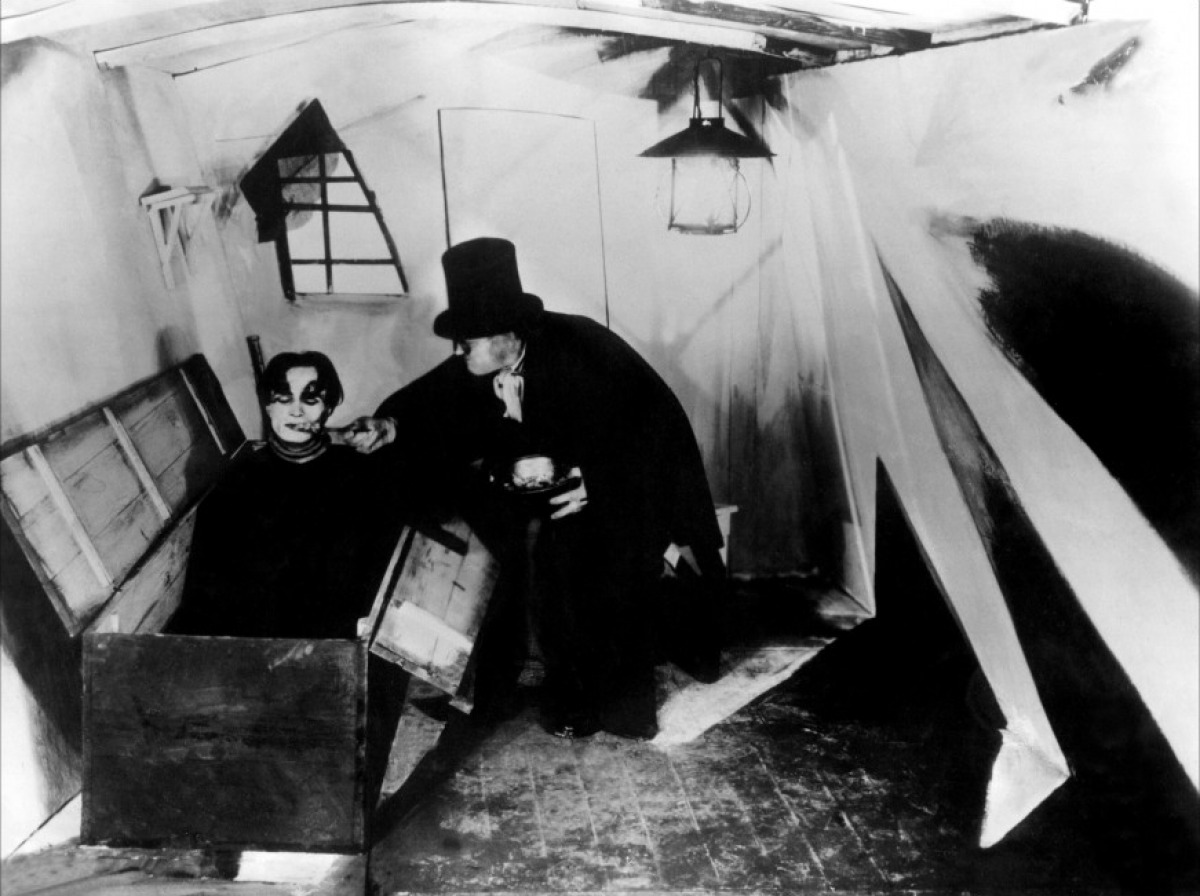
This was one of the first big hits of the German film industry and one of the first horror references in cinema. It was a terrifying movie for its fantastic imagery and gutsy storyline that surprised critics, still holding a position of respect for others in the global film industry.
Werner Krauss, an iconic legend of German film, plays a demented hypnotist who uses a somnambulist to commit murders and spread a spirit of fear and distrust among the people of the city. The movie deals with authority and its distorted mannerisms toward the people or group of persons within a necessary requirement for organization and control.
Several say that this movie predicts the need for a dictator in a disorganized country with a predictably failing system. Personally, I wouldn’t go that far. I don’t think there is a political intention in this film’s message or a prediction of sorts. It mostly deals with insanity and psychotic behavior, using an insane hypnotist as the vehicle for those evil emotions.
It’s just an amazing horror movie, and I wouldn’t take the political view on this one, despite its theme of control and autocracy that surprised everyone at the time of release. The techniques used are innovative and reflect the reason the German language film industry was so important in this time period. “Das Cabinet des Dr. Caligari” is considered a landmark of the Expressionist period of the German film industry.
6. Das weiße Band (Michael Haneke, 2009)
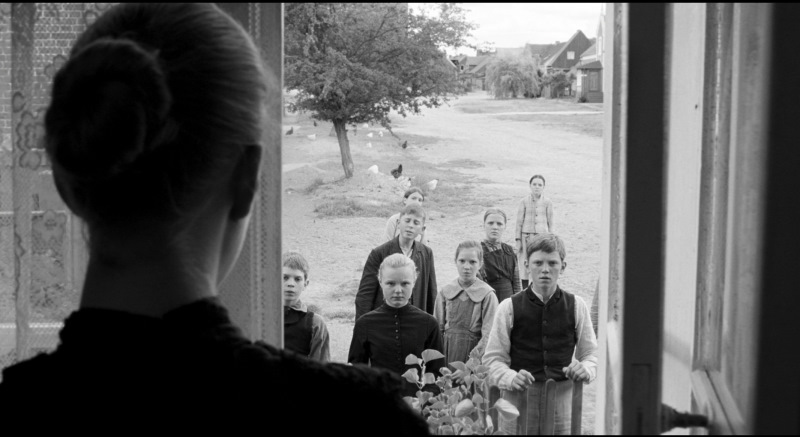
This is Michael Haneke’s masterpiece and one of the toughest and most difficult movies of the decade, in terms of the message and feeling it contains.
“The White Ribbon”, in English, is the exact prototype of a Haneke film, in terms of thematic reach. Taboos were always an appetizer for Haneke, due to its controversial side effects, causing tremendous buzz in cinematographic circles and respective festivals. The director’s intention is to depict evil and its consequences on a rich family living in a small German town after World War I.
The title gives an idea of innocence to the audience and that is done on purpose. Haneke wants to fool the audience by giving the wrong idea to the viewer; he wants to describe an innocence that doesn’t exist and the use of children as main characters gives that full intent back to its initial path.
Children and the white ribbon are symbols of an innocence that should exist, but doesn’t. The movie deals with taboos such as incest, pedophilia, murder and violence. The film’s action is told by the voice of an unnamed elder who tells us the sordid story of a seemingly innocent small German town.
5. Aguirre, der Zorn Gottes (Werner Herzog, 1972)
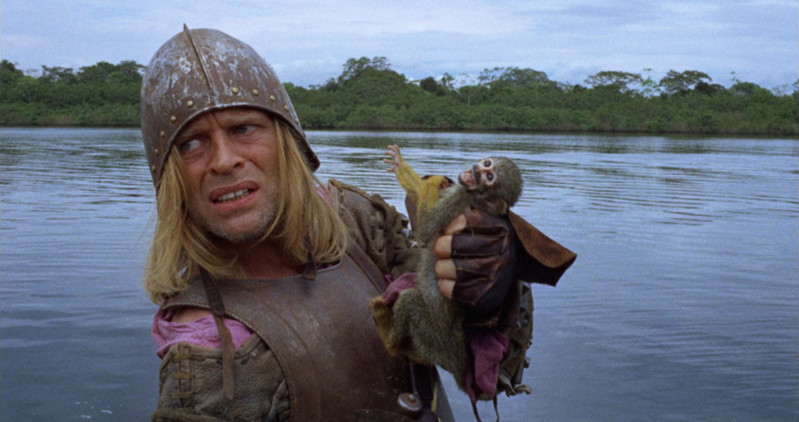
I’ve never been a fan of Werner Herzog, despite his reputation and talent, and despite him being one of the most important cinematographic figures of the German film industry, alongside Bruno Ganz, after 1970. But even a skeptic has to realize the importance of someone to something and the fact that this film is one of the most creative and superb releases of all time gives me reasons and arguments to say that Herzog excels as a director in this movie.
As an object of Herzog’s mind, this release is loosely based on the historical figure of Aguirre, but it mostly comes from the mind of the artist. It features Klaus Kinski, who plays Aguirre, who leads a group of Spanish conquistadores in search for the city of gold. It has almost no dialogue and it’s mostly justified by its fantastic and almost insane imagery, which dominates the entire movie. Also, Aguirre is seen as crazy and almost insane looking, who only wants to reach his objective, by whatever means.
It is masterfully filmed by Herzog’s genius, who portrays this conquistador as an anti-hero and a revolutionary, crazy enough to go through the Amazon River to search for El Dorado, the city of gold. Aguirre’s character fits perfectly with an almost crazy and unstable Klaus Kinski, despite the several collaborations between both legendary figures.
It’s Herzog’s greatest release, quieting skeptics such as myself, who sometimes criticize the director’s imaginative mind, which goes overboard in most of his films. Although it doesn’t seem so, this release is one of the most visually violent movies of all time, presenting an almost ‘pornographic’ sense of reality.
Kinski’s performance is perfect and perfectly fits the actor’s personality, and the set where it was filmed embodies the necessary harsh reality that the movie needs. It’s one of the most watched films of all time with amazing scenes that became a landmark in cinema history.
4. Germania Anno Zero (Roberto Rossellini, 1948)
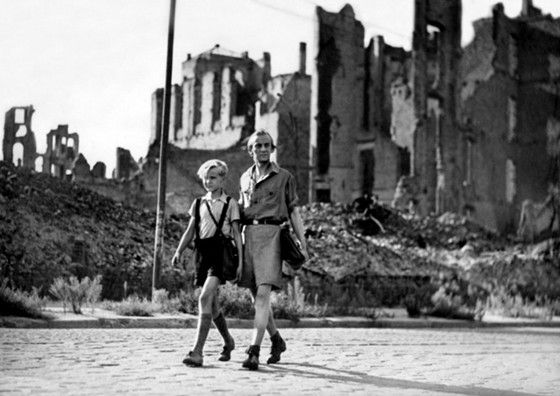
It’s one of the few movies approaching the war theme after World War II that was actually spoken in German. From the periods mentioned above, this movie belongs to the worst era for the German film industry, in comparison to other film industries that had their greatest years in this era. Perhaps the fear of approaching such a difficult subject didn’t allow many films about the war to be made in this era. Most of the films about the war were actually released after 1970, creating a near obsession with that subject.
“Germania Anno Zero” was directed by Roberto Rossellini, an Italian director who had the guts and courage to approach such a difficult theme for the Germans.
This movie is still one of the most controversial movies of all time, and quite difficult to watch for those who lived the destruction after the war. It’s a very realistic film with the courage and freedom to approach several of the unspoken problems that Germany didn’t want to talk about, such as poverty and destruction, as well as the exploitation of the people.
The movie was a novelty to the German film industry, introducing aspects that were taboo at that time. The use of a child in the main role magnifies the sensibility factor of the film’s message. It’s one of the finest realist films of all time and uses amateurs and non-actors for the movie’s most important roles.
It exploits the story of 13-year-old Edmund Kohler, who struggles to survive in a destroyed Germany. He has to deal with the problems of the street and has to support his family, taking care of his bedridden father. The movie’s ending is symbolic of the loss of hope and fatality that the German people encountered during and after the war.
3. Dr. Mabuse Series (Fritz Lang, 1922-1960)
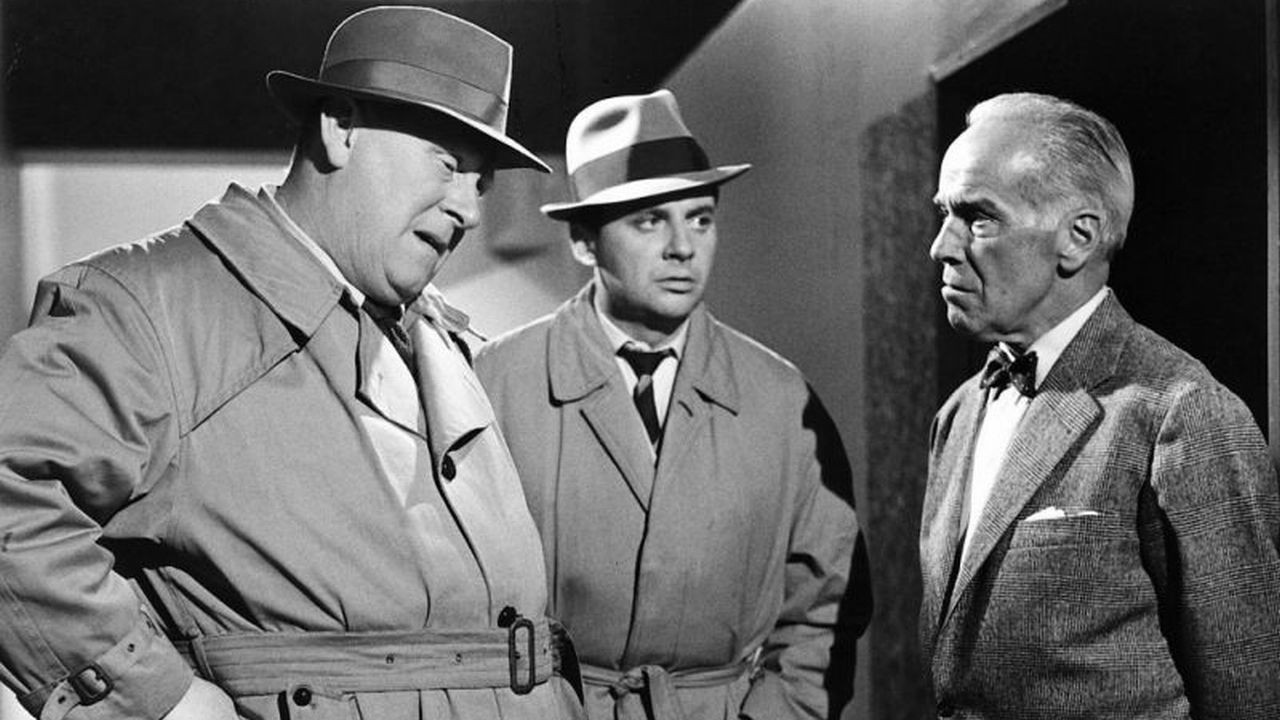
It’s one of the longest film series in history, at least in terms of time, not in quantity of films released. It’s composed of three films, all of them recognized as pioneers in the genre. The second movie, which is the most recognized, is still a necessary film to watch and redefines the crime/mystery genre with a peculiar fast-paced storyline and a tiny bit of experimentalism.
The movies exploit the character of Dr. Mabuse, a talented master of disguise and an evil genius who wants to control the city through the use of his powers of hypnotism and manipulation. The first movie, “Dr. Mabuse”, is a four hour epic release that explores the inner character of Mabuse, the professor and doctor of medicine, who has power and money as main goal, represented via gambling and the stock exchange’s near-crash.
The second one, “Das Testament des Dr. Mabuse”, which is my favorite film of the series, puts Dr. Mabuse as the mysterious murder and perpetrator of terrible crimes. The third one, “Die 1000 Augen des Dr. Mabuse”, released in 1960 and the last movie of the series, exploits a series of crimes that might lead to Dr. Mabuse’s resuscitation.
The second film is truly perfect and a must-watch of the film industry for fans of German film. Regardless, the trilogy is one of the best and its mention is mandatory and necessary to complete this list.
2. Metropolis (Fritz Lang, 1927)
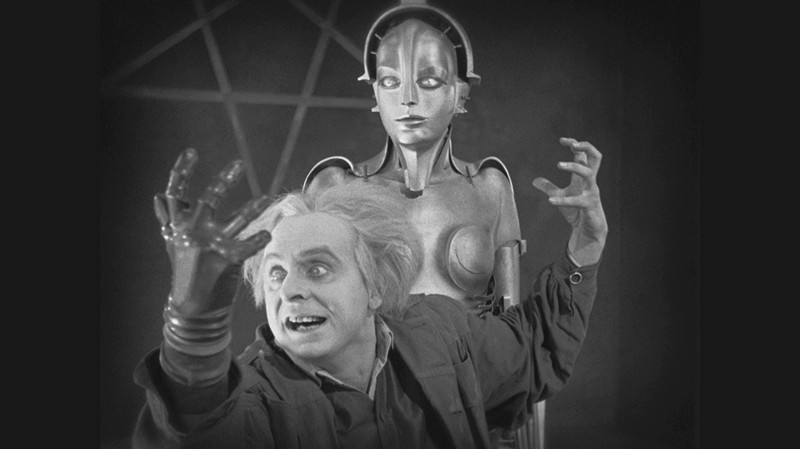
It may very well be the most influential film of all time, presenting a brighter and experimental look at sci-fi movies. It’s a landmark and a pioneer in the genre, and a guideline film for sci-fi lovers, both fans and directors. It’s also one of the first long films in the history of cinema; it’s almost three hours long and it deals with poverty, technology ,and science fiction, setting the action in a futuristic dystopia where only the rich have chances.
The fact that this film was released in 1927 and shows, even today, a fantastic and fully-advanced future completely puts this release as one of the few masterpieces of all time. The construction and portrayal of Maria as the ultimate prophet and savior of mankind is a last ditch show-off of the greatness of this film.
The machine-woman might have a metaphorical reason that can be adapted to contemporary reality at the time of its release. The tryout of diminishing the gap of rich and poor, in a futuristic dystopia, while the love of two men consume their attempt to conquer their passion, are direct consequences for the city’s (society’s) destruction.
It’s a must-watch movie, a masterpiece unparalleled today that completely puts Fritz Lang’s career in a legendary status that won’t ever be overcome. Lang’s career became legendary after this film that is, by far, the most influential movie ever released.
1. M – Eine Stadt sucht einen Mörder (Fritz Lang, 1931)
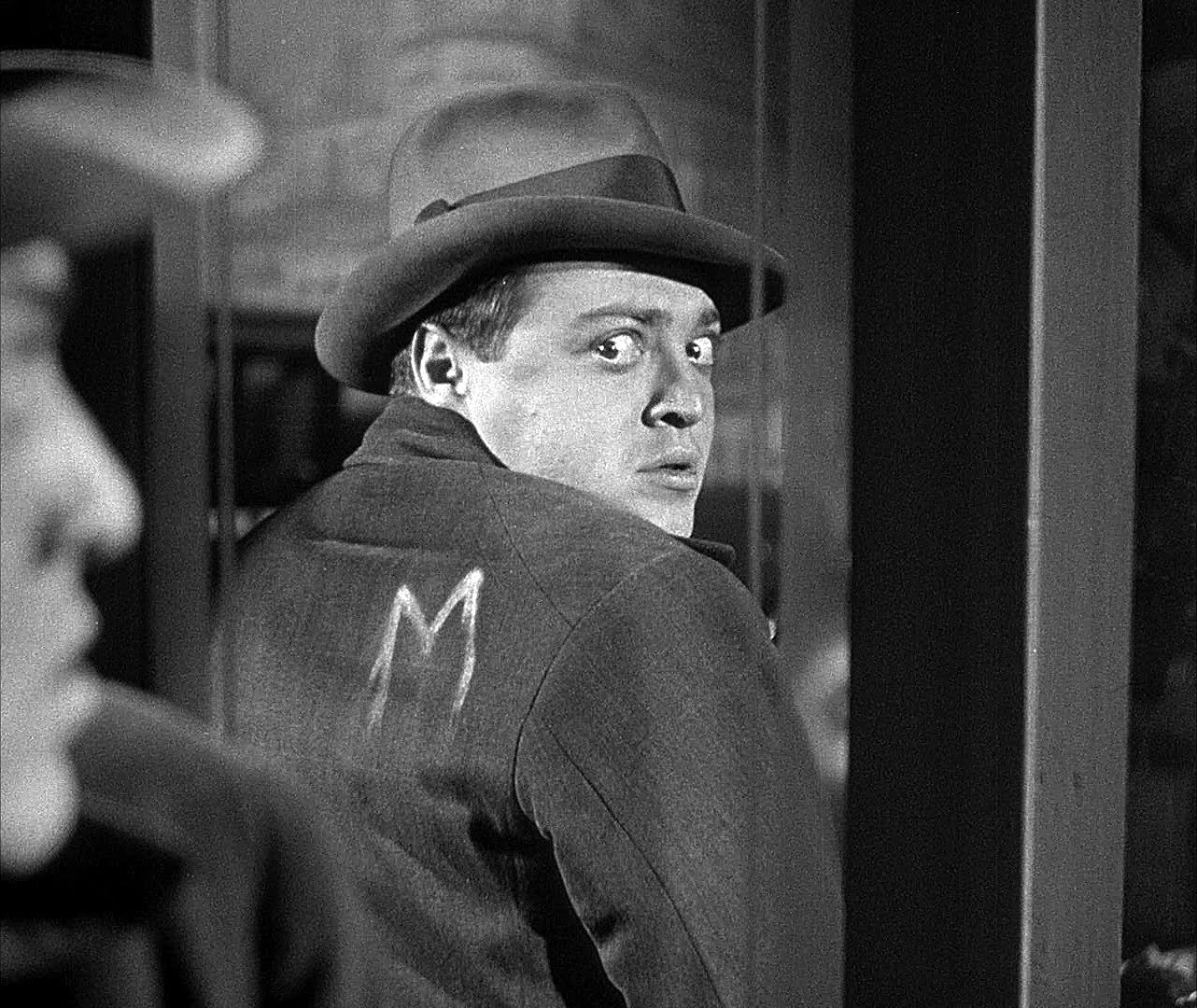
“M“ is my favorite movie of all time, since the first time I saw and the second time I re-watched a few years ago. It completely took the film industry by surprise, mainly due to its polemic and controversial themes of pedophilia and murder, themes that are taboo even today.
It deals with social justice made by the people’s own hands without ignoring the social judgment imposed on a man, who claims to be sick and in need of care. After a long search for a man who is raping and killing children, the people of the city get tired of the police’s incompetence, beginning their own search for justice.
It’s considered one of the greatest influences of world cinema and one of the most influential movies ever made. It is still today a polemic release by one of the finest and most innovative directors of all time, Fritz Lang.
“M” studies the inner characters of human beings without leaving behind the need for more reforms, in terms of justice and social equality. More than a film, this release may be considered as a case study on contemporary problems, supported by excellent performances and an exquisite plot, which is fantastically written and directed.
Author Bio: João Braga is a content writer and freelance translator of 5 different languages. His passion for movies began 12 years ago, starting with Bergman, Kurosawa and Truffaut’s movies. He has a “soft spot” for the intelligent and genial French Cinema.